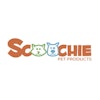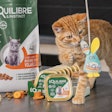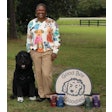
Latin American man looking at the checklist on smartphone to get his groceries at the market - Consumerism concepts
Pet food shoppers continue to diversify their purchasing habits, with cross-channel shopping becoming more common even as brand loyalty remains a factor as well. | Hispanolistic I iStock.com
The current “omnimarket” landscape in the pet industry — which includes the availability of a perplexing array of products from a multiplicity of convenient sources — means that marketers must compete aggressively and substantively for consumer mindshare and customer loyalty.
TABLE 1: Target shoppers have high levels of cross-shopping when it comes to purchasing pet food, being more likely to also shop elsewhere than those who choose other stores.
Log in to view the full article
Subscribe to Magazine


















